Category: General

Report: Ram cancels 500-mile 1500 REV electric truck
Stellantis has reportedly cancelled a bigger-battery version of the Ram 1500 REV electric pickup truck that the automaker previously said would offer 500 miles of range.
According to a Wednesday Mopar Insiders report, the truck brand is now telling suppliers that the long-range model has been cancelled, and to cease work and spending on any parts related to it. A Stellantis spokesperson would only say Ram’s decision to launch the Ramcharger first and shift focus is driven by consumer interest.
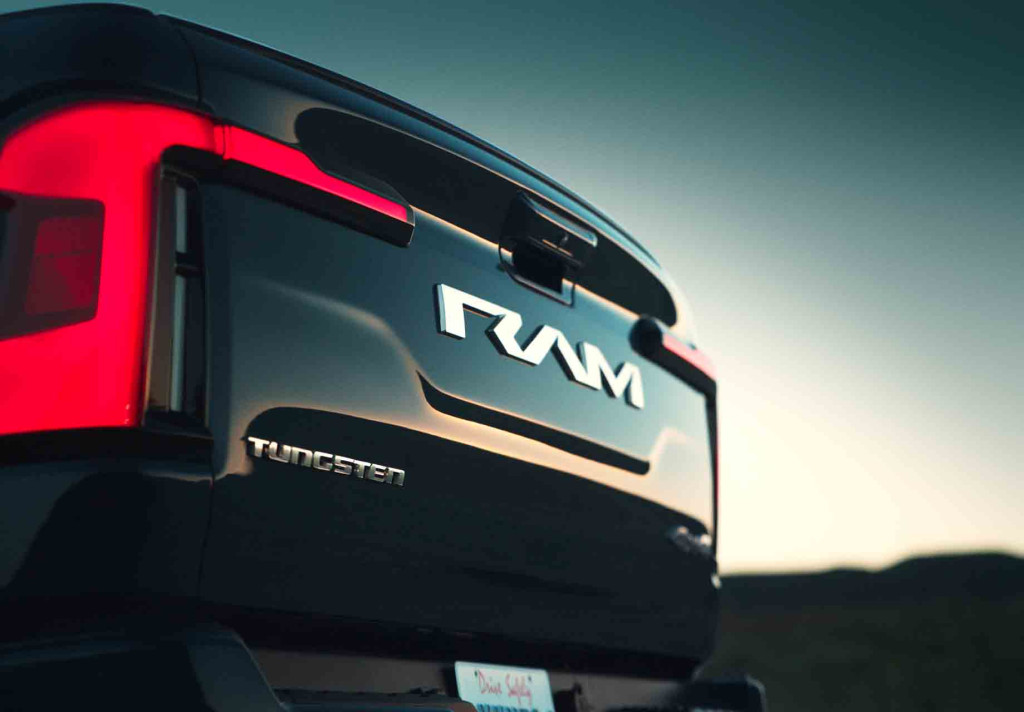
2025 Ram 1500 REV
The report to drop the bigger battery leaves the 168-kwh pack—also double-layer—which Ram previously estimated would deliver up to 350 miles of range. That’s less than the Chevrolet Silverado/GMC Sierra EV twins and Rivian R1T, but the Ram 1500 REV does at least offer 800-volt charging that Stellantis previously said could recover 110 miles of range in 10 minutes with a 350-kw CCS connector.
Big battery or not, the truck is running behind schedule. Ram confirmed the 500-mile target, to be achieved with a 229-kwh double-layer battery pack, at the 2023 New York auto show, and the truck made its debut in a 2023 Super Bowl ad. Stellantis said the electric truck would arrive at dealerships in 2024 as a 2025 model. But late last year, then-CEO Carlos Tavares it was being pushed back to the first half of 2025 to ensure quality. Stellantis later delayed the electric Ram even further, to 2026.
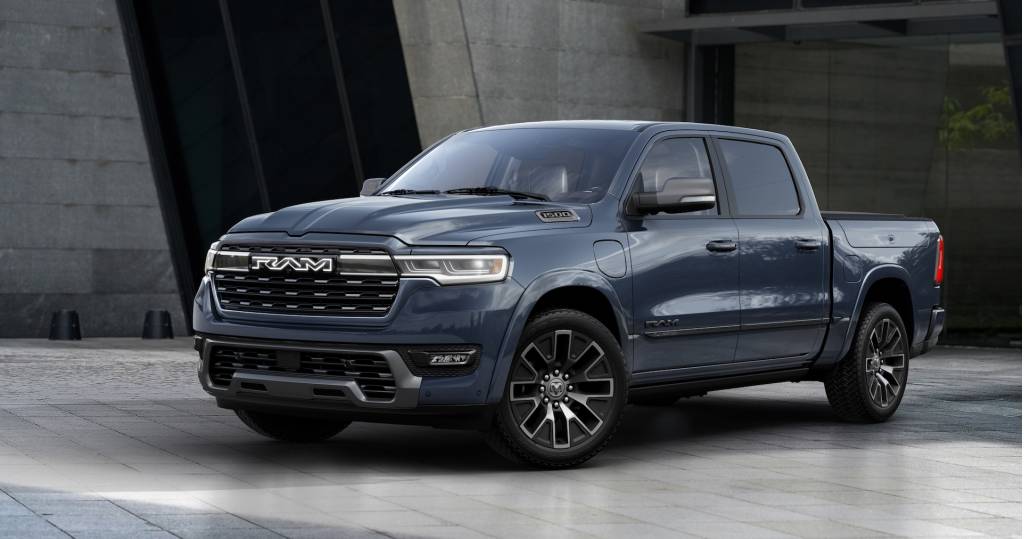
2025 Ram 1500 Ramcharger
Stellantis instead decided to launch the series-hybrid Ram 1500 Ramcharger before the all-electric REV. Now scheduled to arrive in the first half of this year, the Ramcharger uses a 92-kwh battery pack and a 3.6-liter V-6 engine acting as a range extender to deliver 145 miles of pure electric range, toward a total of 690 miles including those from the gas powertrain. The Ramcharger, which also promises similar acceleration, towing, and payload numbers to the REV, offers something novel instead of simply playing catch-up to rivals that have already launched battery-electric pickups. So it was always likely to upstage the REV, a turnabout that’s further enabled by the cancellation of the 229-kwh REV variant.

Hyundai offering 2025 Ioniq 5 buyers a free home charger
Hyundai is expanding an offer of free home chargers or public-charging credits for owners of the refreshed 2025 Ioniq 5 electric vehicle.
This perk was previously offered to owners of the 2025 Hyundai Ioniq 5 N performance variant, but Hyundai confirmed Thursday that it’s now available to owners of other Ioniq 5 models as well. Customers can choose between a free ChargePoint Home Flex Level 2 charger or a $400 public-charging credit for use at ChargePoint’s stations (it was originally $450 for Ioniq 5 N owners).
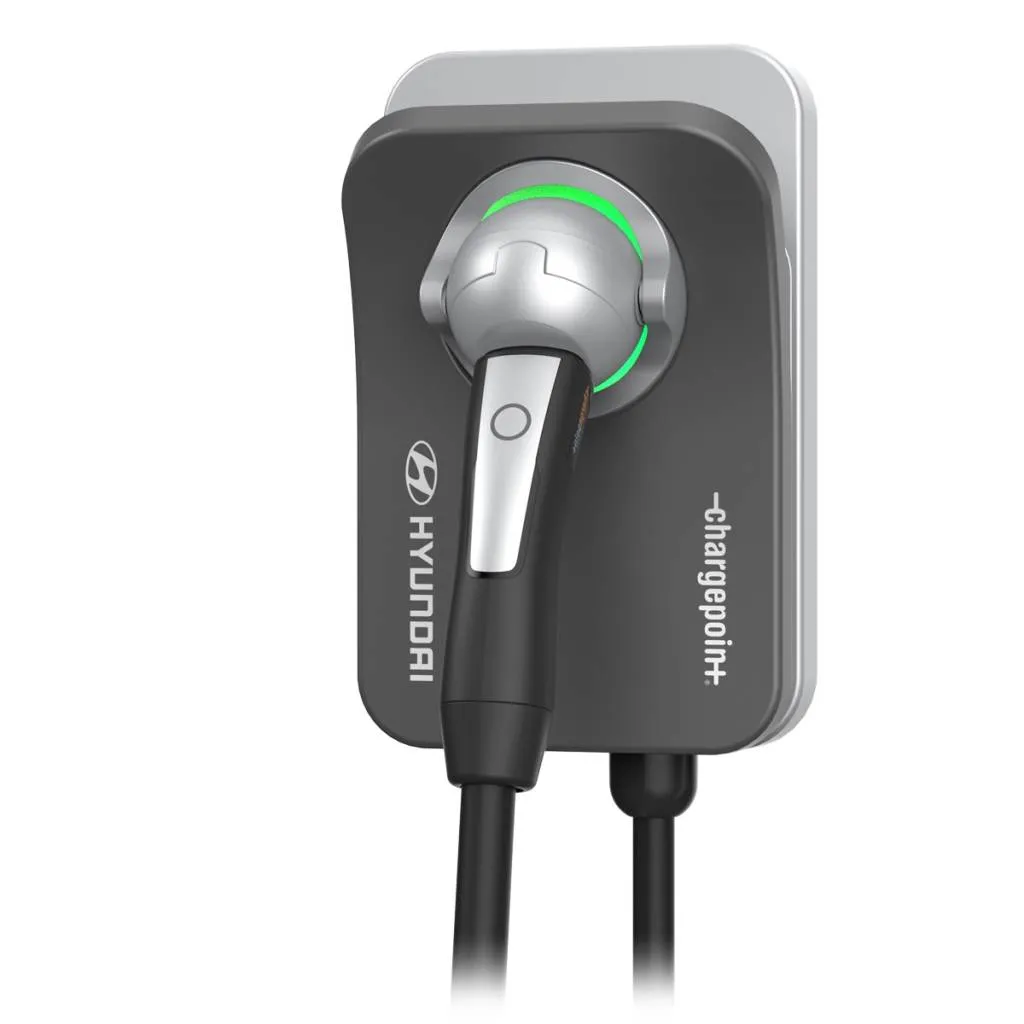
ChargePoint Home Flex Level 2 home charger for 2025 Hyundai Ioniq 5
The home charger is the same unit Hyundai began offering to other EV customers in 2023. Both the charger and installation services are once again provided through the automaker’s Hyundai Home service, which aggregates home-charging possibilities for EV owners, as well as solar and energy storage options, and provides bids for installation.
As with the previous offer for Ioniq 5 N customers, Hyundai is covering hardwired installation, but not any other installation costs, taxes, or fees. Customers who purchased or leased a new 2025 Ioniq 5 after Jan. 1, 2025, have 60 days to choose the free home charger or charging credit, and 120 days to complete hardwired installation for the home charger. The public-charging credit is good for two years.
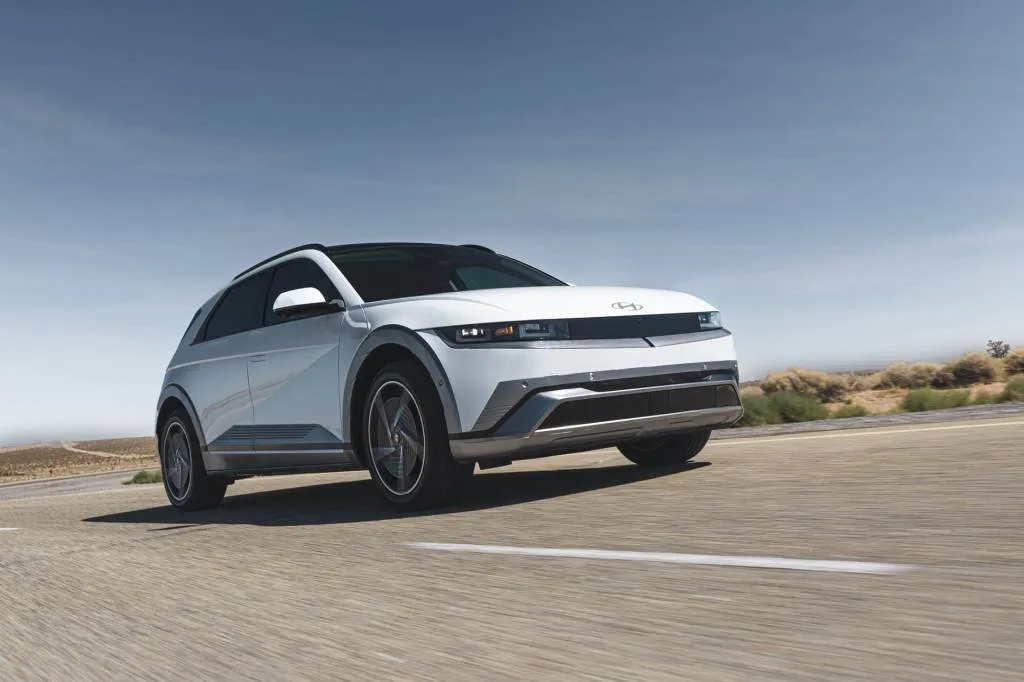
2025 Hyundai Ioniq 5
The Ioniq 5 N, we’ve found, resets expectations for enthusiast EVs with genuine track capability and handling prowess to complement the brutal straight-line acceleration many EVs already offer. But the 2025 Ioniq 5 gets a number of notable updates, too.
Hyundai increased the size of the two available battery packs, boosting estimated range to 318 miles with the larger pack. Charging for all but the 5 N is now accomplished with a Tesla-style NACS connector; a new XRT grade brings off-road features; and all versions feature small styling changes. Hyundai is also shifting most Ioniq 5 production—5 N version aside—to its Georgia “Metaplant.”

ChargePoint attempts to fight EV charger cord cutting
ChargePoint aims to curtail vandalism at public electric vehicle charging stations by equipping them with cut-resistant cables and alarm systems.
The company unveiled both features Thursday, confirming that cut-resistant cables will be available for all of its “commercial and fleet charging stations.” It also plans to license the cut-resistant cable design—which uses a novel mix of materials the company claims is more difficult to tamper with—to other charging-equipment manufacturers starting in the middle of this year. But it’s unclear if existing stations can be retrofitted with the new cables.

Porsche Macan EV at ChargePoint charger
Existing owners of certain charging stations can have the alarm system added, though, as it’s a software-based feature that uses the speakers and lights already built into compatible station models. It’s available via a free over-the-air (OTA) software update, and includes email or text-messaging notification options if the alarm is triggered.
EV charging cables have been targeted by copper thieves in the past. A 2024 Associated Press report noted an increase in reported cable thefts that coincided with rising copper prices. Such thefts leave big repair bills for charging-station owners and fewer available chargers for EV drivers.
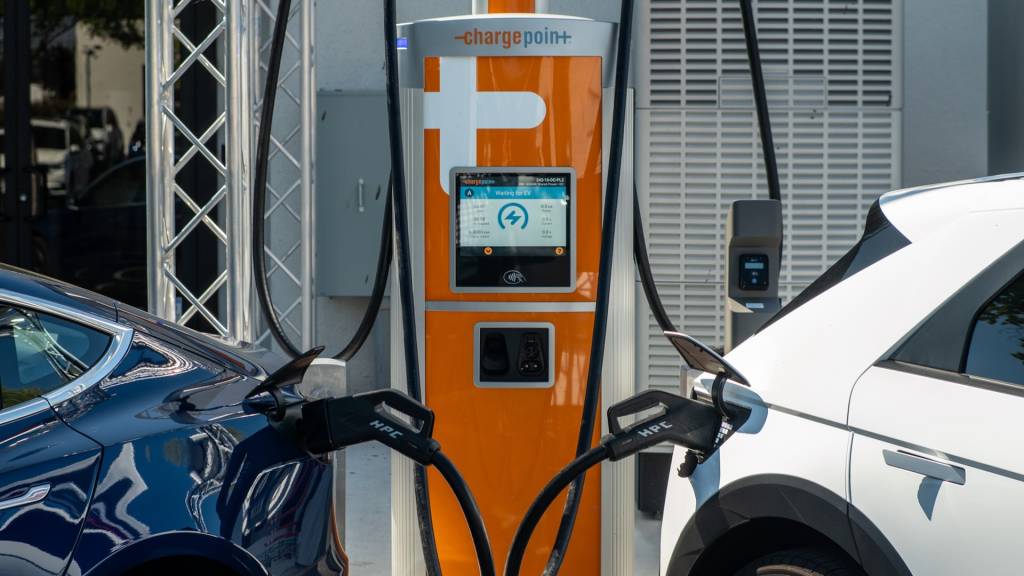
ChargePoint Omni Port
Additional security measures and tamper-proof cables could help deter cable-cutting thieves, but the solution might also be partly technological. Higher-power 800-volt charging means thinner cables that might be less of a target for theft. Companies have also been aiming to reduce cable bulk through innovative cooling methods, which could at least soften the financial blow when cables need to be replaced due to theft or vandalism.
A more direct solution to cable cutting is to eliminate the cables altogether. Wireless charging offers this, along with added convenience for EV drivers, but it’s been slow to catch on. So far, WiTricity is the only company supplying the tech in an original-equipment, passenger-vehicle, personal-use application outside China—the South Korean-market version of the Genesis GV60.

Elaphe created in-wheel motors compatible with track-ready brakes
Slovenia’s Elaphe is emphasizing performance applications for its in-wheel electric motors.
At CES 2025, the company unveiled the Sonic 1, a thin electric motor it claims is compatible with high-performance brakes. That can be difficult with in-wheel motors, as they occupy the same real estate as brake hardware. Slimming down the motor allows for larger 400-millimeter brake rotors to be packaged together with motor hardware within a 21-inch front wheel, Elaphe claims in a press release.
The Sonic 1 is intended for EVs or hybrids. It generates 268 hp and 737 lb-ft of torque by default, but can be tuned for higher outputs. Each motor also adds 88 pounds of unsprung weight, which could make tuning for ride and handling more difficult.
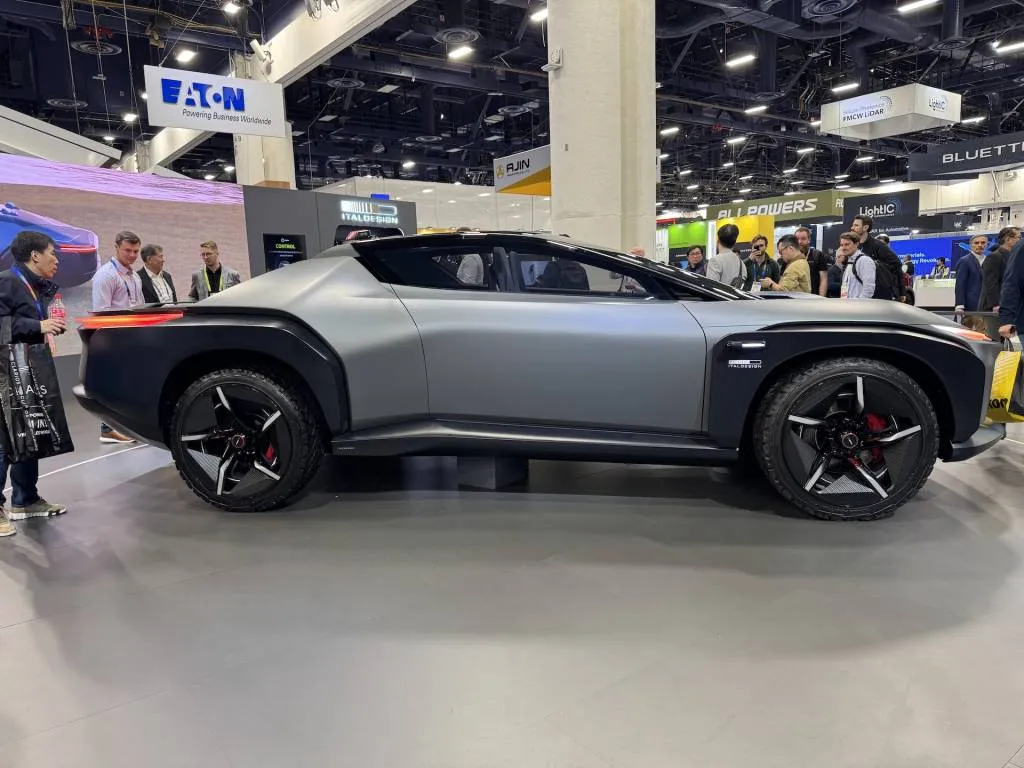
Italdesign Quintessenza concept
Elaphe in-wheel motors were showcased on the Italdesign Quintessenza GT concept, a grand tourer with a raised ride height and pickup-style bed. Italdesign quotes a 0-62 mph time of 2.5 seconds, or 2.2 seconds with performance tires. A 150-kwh battery pack mounted under the floor provides an estimated 466 miles of range, although it’s unclear which test cycle that number is based on.
Elaphe in-wheel motors were slated to be used in the Lordstown Endurance pickup truck and the hyper-efficient Lightyear 0 sedan, but neither reached volume production. In 2023, Elaphe also announced a partnership with McLaren Applied Technologies—the tech arm of the race team and supercar builder—to use its motor tech in “highly efficient and hyper-responsive electric vehicles.”
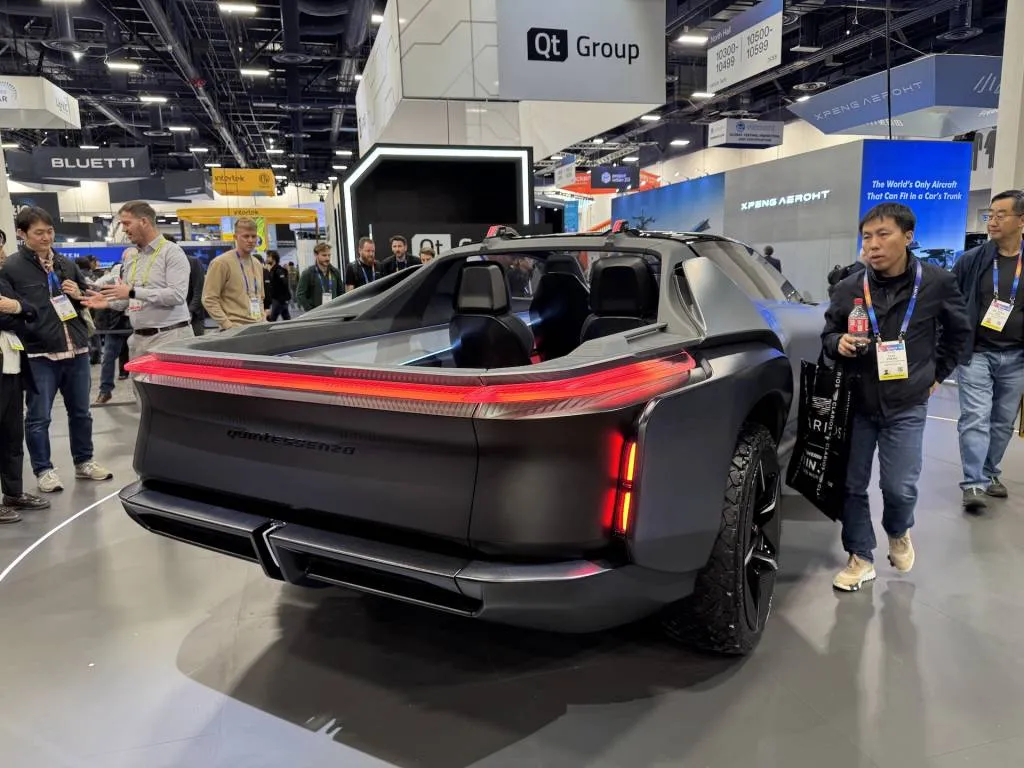
Italdesign Quintessenza concept
In-wheel motors offer the packaging advantage of moving propulsion hardware to the corners of the vehicle. Despite the tradeoffs, established automakers are also showing more interest. Ferrari has tried to patent an in-wheel motor design for performance EVs, while Ford pickup trucks with what might be in-wheel motors were spotted testing last year.
Elaphe isn’t the only company slimming its in-wheel motors to achieve greater packaging flexibility and reduced unsprung weight. Donut Lab unveiled its own family of motors at CES 2025, claiming record power density and a wide range of sizes for use in everything from cars to drones.

Polestar 7 small SUV announced, Polestar 5 reconfirmed for 2025
The next Polestar electric vehicle will be a compact SUV called the Polestar 7, the automaker confirmed Thursday in a business update.
The Polestar 7 will be manufactured in Europe, and will mark the beginning of a move to a single common architecture for future vehicles, according to Polestar. The brand currently relies on an assortment of platforms shared with other brands under the Geely corporate umbrella, but has been emphasizing more bespoke engineering work for future vehicles, while further differentiating exterior design.
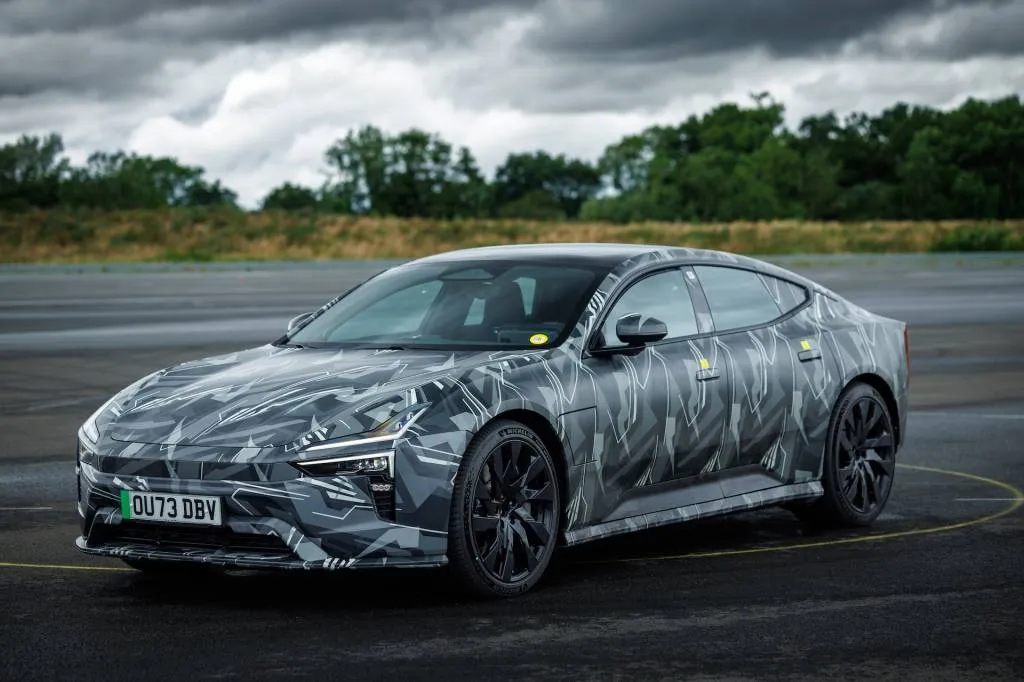
Polestar 5 prototype ride
“Polestar is known for its progressive design, with each car standing out and creating its own buzz—so too will Polestar 7,” design boss Philipp Römers said in a statement.
Launch timing was not discussed, but Polestar was two other models already in its queue. The automaker reaffirmed that the Polestar 5 will start sales in the second half of this year. The four-door fastback looks to be a major technical leap for Polestar, with an 800-volt architecture for faster charging and huge battery cells for increased range.
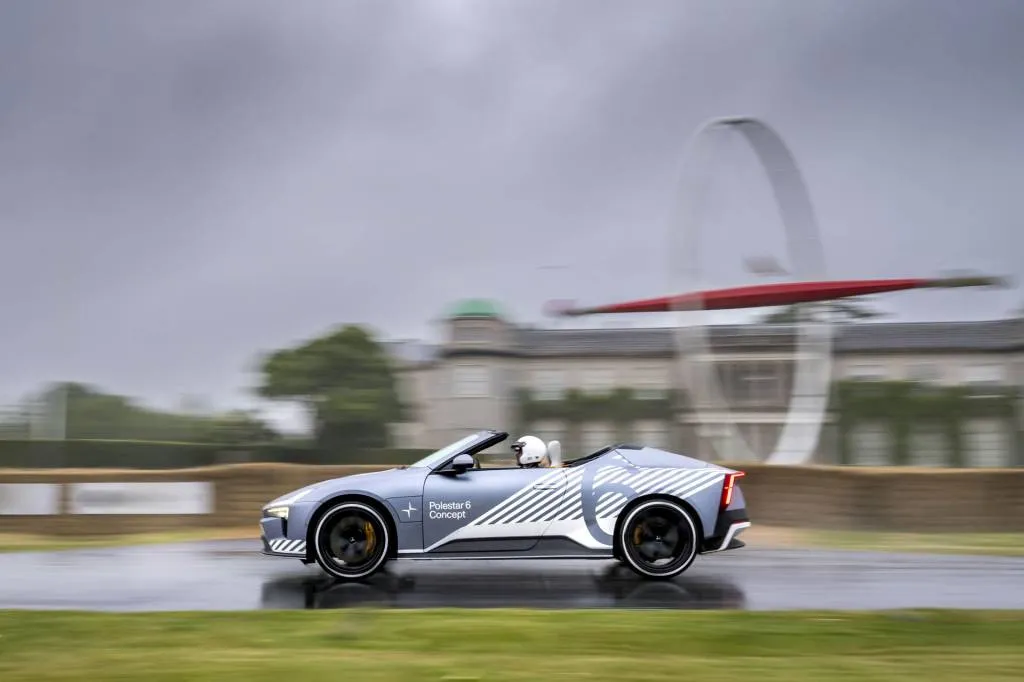
Polestar 6 Concept AT 2024 Goodwood Festival of Speed
The automaker didn’t provide any updates this time around, but in 2022 it confirmed the Polestar 6 roadster for production in 2026. The timing was still in effect last July, when Polestar showed the Concept BST, which hinted at a spicier version of the convertible sports car.
Ambitious plans to grow the model lineup are matched by ambitious plans to grow sales. Polestar said it aims to increase global sales volume 30%-35% between 2025 and 2027, aided by a 75% increase in retail spaces, while retaining its current hybrid model of direct sales with servicing handled by traditional dealerships. Polestar claimed a 5.3% increase in global sales in the fourth quarter of 2024, but a 37.2% increase in new orders during that period.

Honda and Acura EVs gaining Tesla Supercharger access this spring
Honda and Acura electric vehicles will be able to use Tesla Supercharger stations starting this spring, Honda said Wednesday in a business update.
As with other non-Tesla brands, Honda and Acura EV owners will receive adapters that allow Tesla’s NACS connectors to plug into their CCS-equipped vehicles. The automaker did not provide any further detail, so it’s unclear whether any adapters will be provided for free, or how much they will cost if not.
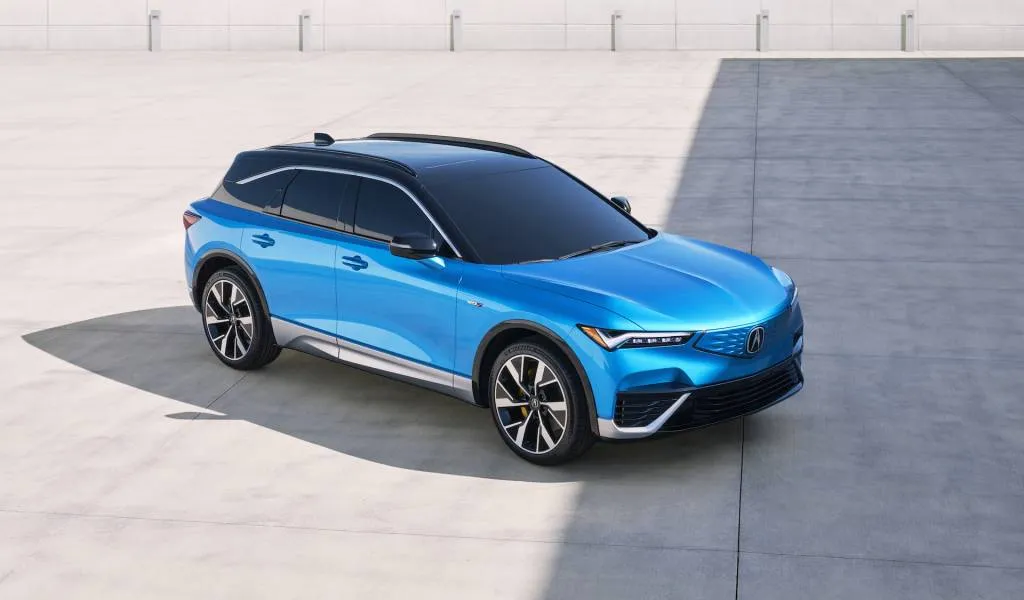
2024 Acura ZDX
The Honda Prologue and Acura ZDX SUVs—the only all-electric models currently sold in the U.S. by their respective brands—are based on General Motors architectures and are manufactured by GM. But Honda handles charging matters independently, hence the delay between GM’s rollout of Supercharger access in September 2024 and the Japanese automaker’s scheduled rollout.
Besides Honda and Acura, the next few months will see a few other brands adding Supercharger access. Mercedes-Benz plans to open Supercharger access in February, followed by Kia later in the quarter, and Volkswagen, this summer. BMW, Genesis, Lucid, and JLR (comprising Jaguar and Land Rover) are currently listed as “coming soon” on Tesla’s website, but specific timing has not been confirmed.
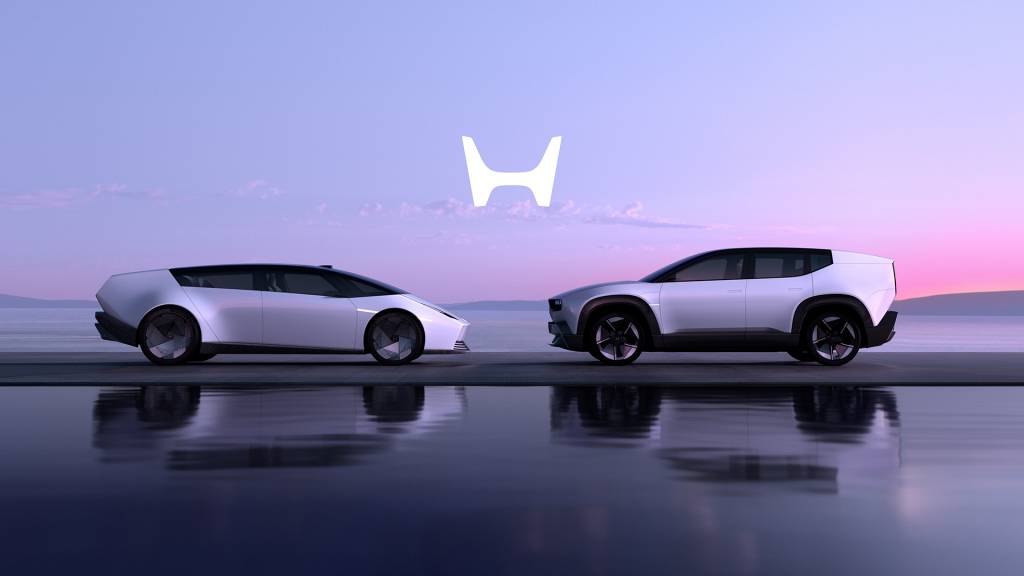
Honda 0 Saloon and 0 SUV prototypes
Honda is also one of the eight automakers backing the Ionna DC fast-charging network, which will offer both CCS and NACS connectors. The automaker said four Ionna charging sites—dubbed “Rechargeries”—are now in beta testing, with groundbreaking for a fifth site done in the last month.
The combination of Supercharger access and the Ionna network will support what is set to be a growing number of Honda and Acura EVs developed in-house and built at retooled facilities at Honda’s traditional U.S. manufacturing base in Ohio. The first of these will be the Acura RSX compact SUV launching later this year, followed by the first Honda 0 Series models in 2026. Recently previewed at CES 2025, the 0 Series models will have native NACS ports.

Which automakers have Tesla Supercharger access?
- Tesla’s opened its Supercharger network to non-Teslas
- Ford and Rivian were the first non-Teslas to plug in
- Access takes an automaker-provided adapter or Tesla Magic Dock
- In most cases there are software components and it’s more than just an adapter
By the end of 2024, nearly ever major EV brand selling cars in the U.S. had signed on to offer Tesla Supercharger access, and eventually adopt the automaker’s NACS port for future EVs. But the rollout has proceeded at different speeds for each brand.
Owners of EVs from most non-Tesla brands must use an adapter to connect with Supercharger stations until the widespread rollout of new cars with NACS ports, a process that recently started with the 2025 Hyundai Ioniq 5 and is aided by the formalization of NACS as a true standard by the SAE in late 2023.
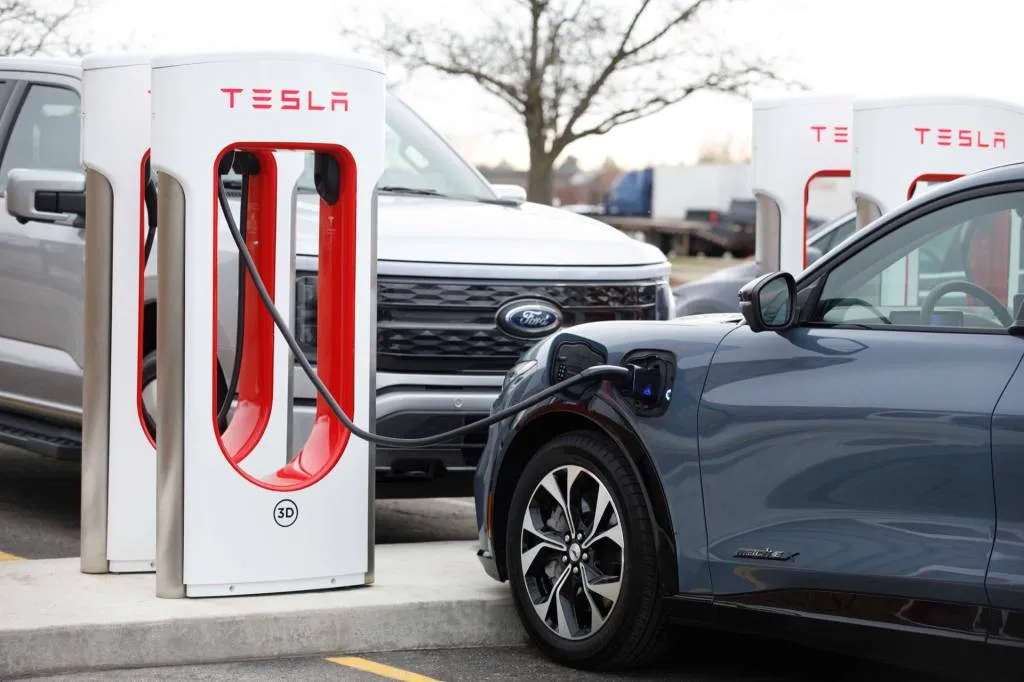
Ford EVs at Tesla Supercharger
Most automakers are also pushing software updates that allow their EVs to properly interface with Supercharger stations for plug-and-charge operation, as well as updates that allow Supercharger stations to appear on in-vehicle route planning and payment apps. With these updates in place, Tesla’s Magic Dock adapter at many Supercharger stations may work in lieu of a separate automaker-provided adapter.
As with the original announcements of the switch to the Tesla charge port, Ford led the way in providing adapters to let customers fast-charge at Supercharger stations. That started in February 2024, with other automakers following later in the year and a few now confirmed for the first half of 2025. Here’s where things stand now.
Automakers that have Supercharger access:
Ford
Rivian
General Motors
Volvo
Polestar
Nissan
Automakers said to be getting Supercharger access “soon” according to Tesla:
BMW
Genesis
Hyundai
JLR
Kia
Lucid
Mercedes-Benz
As Green Car Reports has pointed out before, Tesla’s V4 hardware will likely be able to handle electric vehicles that charge at 800 volts at the full rate. But Tesla’s V3 hardware—the majority of North American hardware available on the Supercharger network at this time—the limit is 400 volts, or maybe a little bit higher.
That creates a dilemma for automakers already selling vehicles with 800-volt charging, as those cars will charge slower at Tesla V3 Supercharger stations than they would at the most powerful CCS stations. But the more widespread deployment of V4 Superchargers will help solve that, along with the buildout of the Ionna fast-charging network backed by eight automakers that’s expected to include both CCS and NACS connectors.

Electric Chrysler SUV development halted
Stellantis has halted development of what was to be the first electric vehicle for its Chrysler brand, shifting focus to other electric models.
The Chrysler Airflow concept unveiled in 2022 was to serve as the basis for a production electric SUV, but Mopar Insiders reported earlier this week that development work on this model had been suspended. That report cited an email to suppliers saying the program was “on hold until further notice” and that “any spending associated with this program should be suspended immediately.”
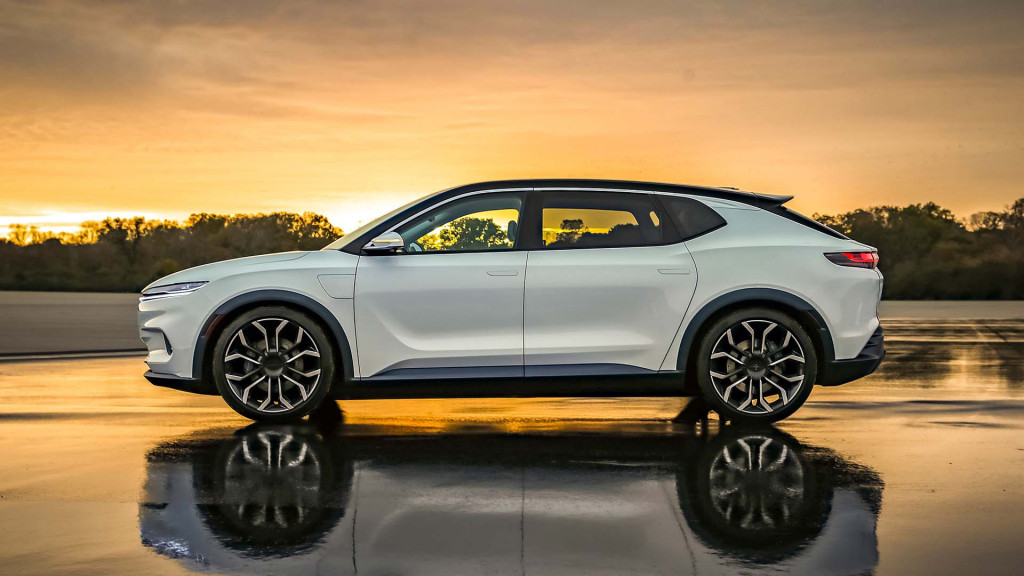
Chrysler Airflow concept
A Stellantis spokesperson confirmed to Green Car Reports that the electric SUV “is paused for now as we assess the market and our customers’ needs and wants.” This means the Chrysler brand will continue with just a single minivan—sold as both the Voyager and Pacifica, the latter available with a plug-in hybrid powertrain—in 2025, its 100th anniversary year.
A refreshed Pacifica is coming in 2026, the spokesperson confirmed, followed by a new crossover SUV and a third model based on the Halcyon concept, Chrysler CEO Christine Feuell confirmed in an interview earlier this month. Unveiled in 2024, the Halcyon is an electric four-door coupe that likely appeals to a smaller market than an SUV.
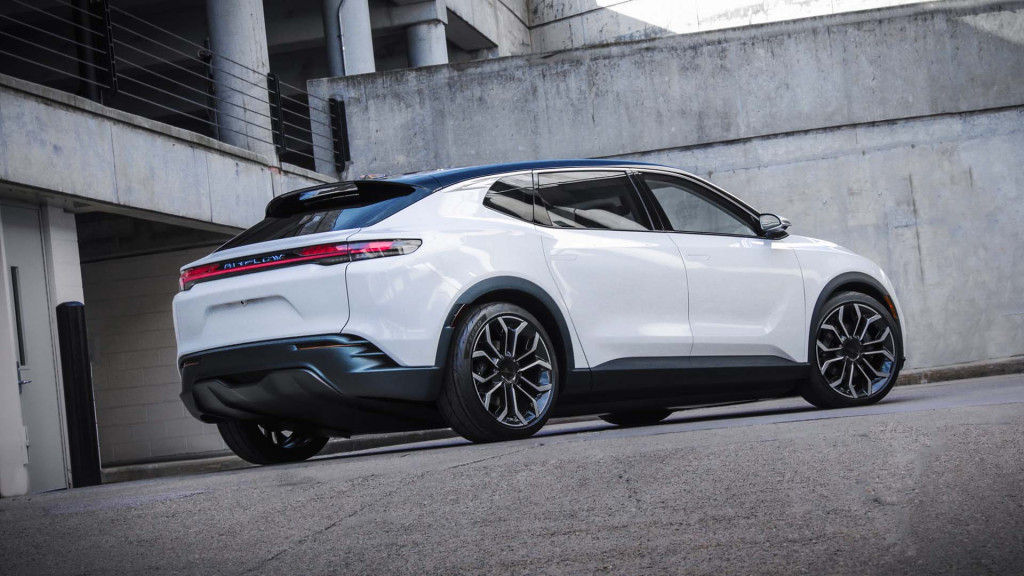
Chrysler Airflow concept
Chrysler initially said that it would launch an electric SUV based on the Airflow concept in 2025, but enthusiasm for the project seemed to wane quickly after that. In 2023, Feuell reportedly ordered a rethink that would have dropped the concept’s styling and the Airflow name, which references a pioneering Chrysler model line from the 1930s that helped introduce aerodynamic design to the automotive industry.
Feuell told Green Car Reports in 2022 that Chrysler was also developing an electric minivan, and in an interview at the 2024 LA Auto Show last November, the CEO confirmed that this new model will bear the Pacifica name. It’s slated to be introduced at some point after the refreshed version of the current Pacifica debuts in 2026.

Kia EVs gain Tesla Supercharger access in Q1, adapters in early 2025
- Those who purchased a Kia EV after Sept. 4 will get free NACS adapters in 2025
- Kia hasn’t said how much the adapters will cost for everyone else
- Kia EVs will be able to charge at Tesla Superchargers before the end of the first quarter
Kia on Tuesday modified its rollout plan for Tesla North American Charging Standard (NACS) adapters and access to the Tesla Supercharger network.
Customers who take delivery of a 2024 or 2025 Kia EV9 or a 2024 Kia EV6 from Sept. 4, 2024, will receive a free NACS adapter. All other Kia EV owners—including EV6 and EV9 owners who took delivery of their vehicles before the cutoff date, as well as all Kia Niro EV owners—will have to pay an undisclosed price for their adapters.
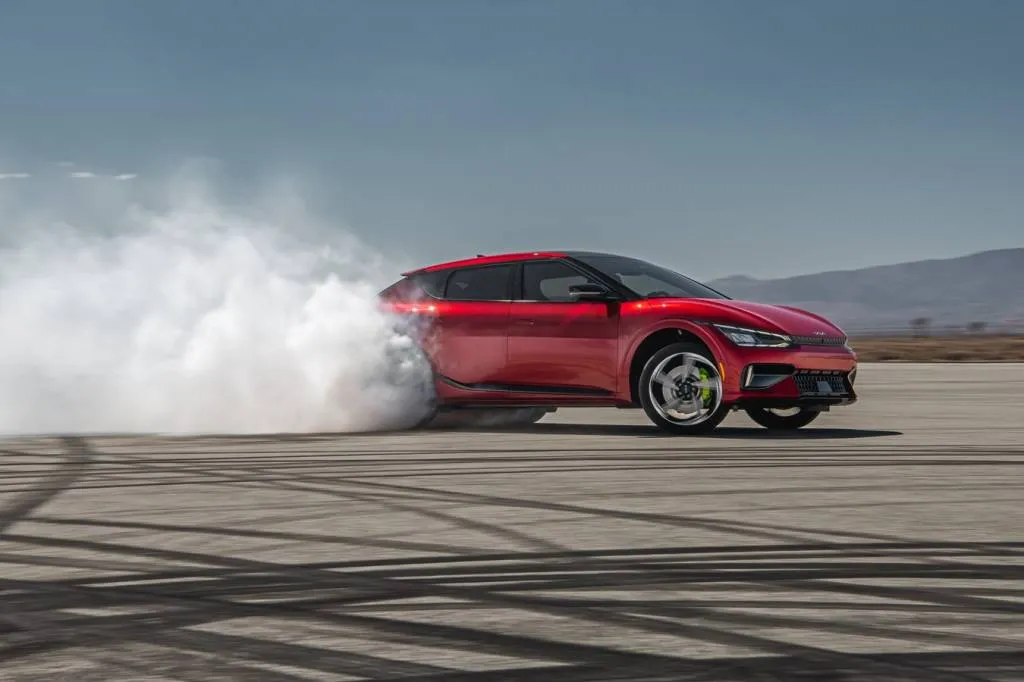
2024 Kia EV6 GT
Most major car brands have announced plans to adopt the NACS charge port, but only a handful have followed through with plans to offer adapters and Supercharger access. Of those, only General Motors is making all customers pay for adapters. But Kia is being stingier than Ford, which offered one free adapter per vehicle to all existing EV customers initially.
Kia plans to begin shipping adapters in early 2025, and plans to open up Supercharger access by the end of the first quarter. Originally Kia EV owners were to get access to the Supercharger network on January 15, but on the 15th the automaker modified that timeline. Kia’s didn’t specifically mention Tesla or Superchargers, only saying that customers will be able to charge at “more than 16,500 NACS DC fast chargers in the U.S.” That number is based on the count of total NACS connectors by the Energy Department’s Alternative Fuel Data Center (AFDC) as of September 2024.
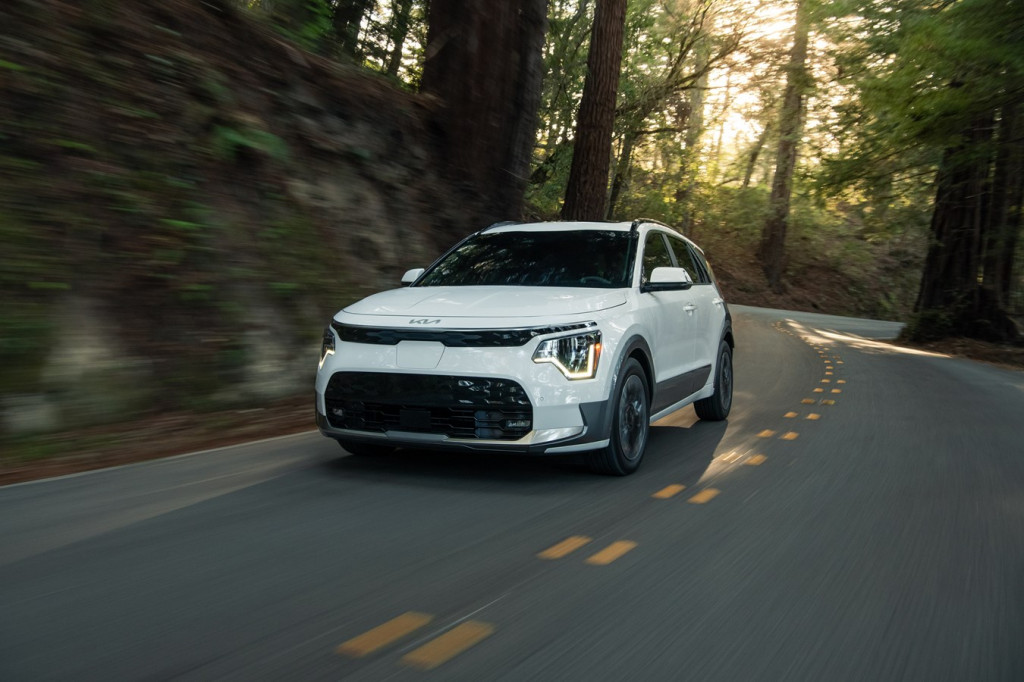
2023 Kia Niro EV
Most other automakers—Stellantis being the only exception—were quick to mention Tesla in their announcements. Kia is one of the automaker partners in the Ionna North American fast-charging network, which has voiced its commitment to both the NACS and CCS standards. So perhaps Kia is looking to emphasize the idea of NACS connectors that aren’t part of the Supercharger network in anticipated of Ionna’s buildout.
Kia, along with sibling brands Hyundai and Genesis, announced NACS support. Hyundai has started building Ioniq 5 EVs with Tesla NACS charge ports, but Kia did not discuss a timeline for adding NACS ports to its vehicles.
This story was updated to reflect a new timeline for Kia EV access to Tesla’s Supercharger network as of January 15.

GM sidesteps China with synthetic graphite for EV batteries from US
General Motors on Wednesday signed a multi-year agreement with Norway’s Vianode for supply of synthetic graphite anode material for electric vehicle batteries.
The deal runs from 2027, when Vianode expects to begin producing synthetic graphite at a new North American plant, to 2033, according the companies. The material will be used in battery cells manufactured by the Ultium Cells LLC joint venture between GM and battery supplier LG Energy Solution.
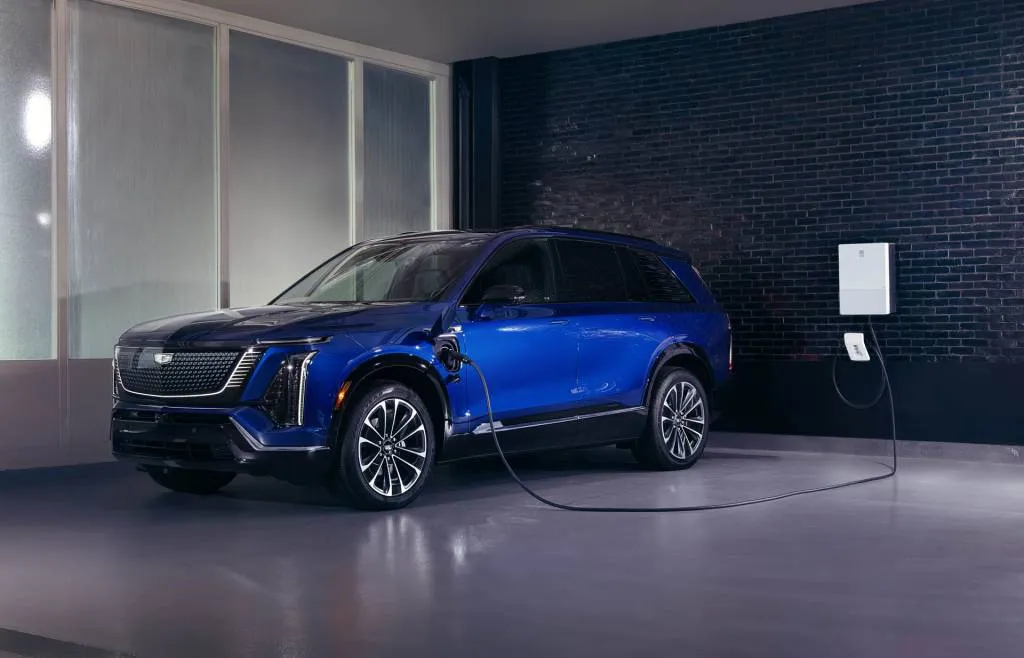
2026 Cadillac Vistiq
China controls 95% of the global graphite supply, which has left Western automakers and governments looking to cultivate looking sources of the material, which has become more important for EV battery production, Reuters noted. China has also been designated by the federal government as a Foreign Entity of Concern, meaning vehicles with battery materials sourced from there don’t qualify for a tax credit.
Vianode claims its new plant will be “IRA compliant,” meaning battery materials produced there shouldn’t interfere with qualification for the federal EV tax credit under current rules, defined by the Inflation Reduction Act, that specify North American sourcing of critical minerals. That’s assuming the tax credit isn’t killed off by the incoming Trump administration.
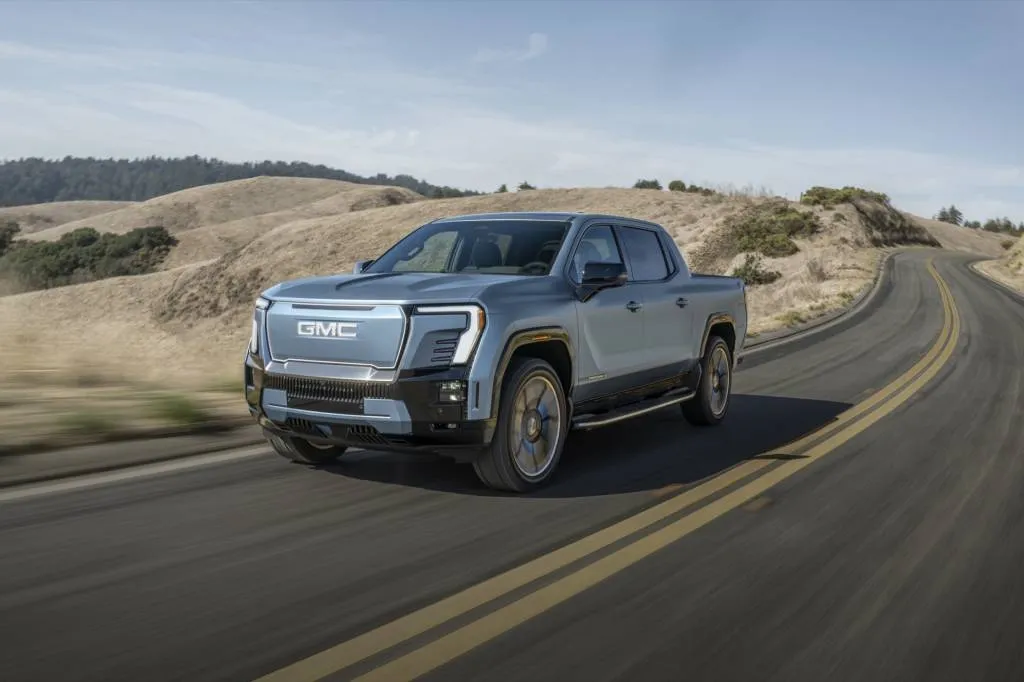
2025 GMC Sierra EV Denali
The plant will be located in either the U.S. or Canada, but a specific site has not been finalized, Vianode CEO Burkhard Straube said in an interview with Reuters. In its first planned phase, the plant is expected to produce 80,000 tons of synthetic graphite by 2030, enough to supply 1.5 million EVs. Vianode claims its manufacturing process comes with a 90% smaller carbon footprint than conventional methods.
GM made two other noteworthy changes to its battery plans last month. The automaker said it would sell its stake in the Ultium Cells LLC Michigan plant—one of three currently in operation—to LG, while simultaneously announcing plans to extend a technical partnership with that company to include prismatic cells. GM has for the moment standardized its EV hardware around pouch cells, but CEO Mary Barra said in 2023 that the automaker was flexible on battery-cell format.
